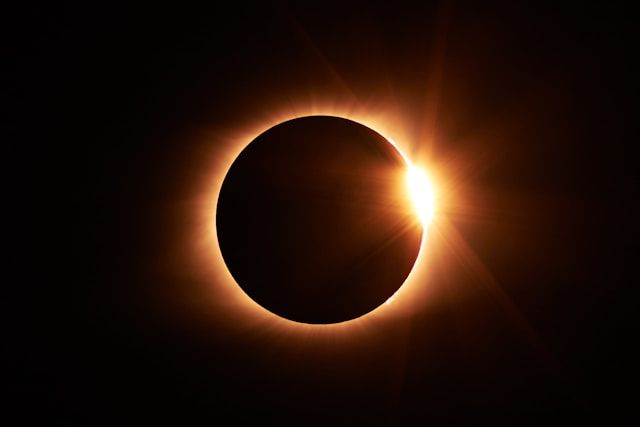A fascinating partial solar eclipse will grace the skies of the UK, with optimal viewing in the western regions just before sunset
In an awe-inspiring display of celestial mechanics, the UK is set to witness a partial solar eclipse this coming Monday. The event, a precursor to the total solar eclipse spanning North America, will offer a unique spectacle to those situated in the right locations across the country. As the Moon positions itself between the Earth and the Sun, observers in western parts of the UK will have the opportunity to see the Moon nibble at the edge of the solar disc.
The eclipse’s journey across the globe will culminate approximately 620 miles off the coast of Cornwall in the Atlantic Ocean. However, its effects will still be visible from the UK’s western regions as the day comes to a close. A line from Fowey in Cornwall stretching up to Berwick upon Tweed in Northumberland marks the eastern boundary of the potential viewing area. Those west of this line are in for a treat as the Sun sets, partially obscured by the Moon.
Embed from Getty ImagesViewing conditions will be crucial for those hoping to catch a glimpse of this partial solar eclipse. Simon King, a BBC Weather presenter, advises seeking high ground and a clear sky for the best experience. The eclipse will occur late in the day, meaning the Sun will be low on the horizon, setting before the eclipse concludes. This timing adds a dramatic backdrop to an already captivating event, though it also places a premium on finding an unobstructed view.
For safe viewing, experts strongly discourage looking directly at the Sun without proper protection. Solar eclipse glasses, designed to block harmful UV rays while allowing viewers to safely observe the eclipse, are recommended. For those without access to these glasses, a pinhole projector offers a simple and safe alternative. By allowing sunlight to pass through a small hole in one piece of paper and projecting the image onto another, observers can watch the eclipse’s progress without risking eye damage.
The weather forecast suggests that clear skies may be in short supply in regions best positioned for viewing. Northern Ireland and western Scotland, expected to see around 20% of the Sun eclipsed, may contend with cloudy skies and rain. Similar conditions are anticipated for Wales and western England, where the eclipse will be less pronounced. The best chance for clear conditions appears to be in the Western Isles of Scotland, where eclipse enthusiasts might find the skies more cooperative.
For those unable to view the eclipse directly, or for those outside the viewing area, the BBC website will offer live coverage of the North American total solar eclipse. Starting at 14:00 BST, the coverage will include live video feeds and updates, providing a virtual front-row seat to this remarkable astronomical event.
